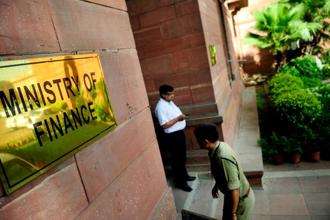June 25, 2015
As the interplay of geopolitics and economics plays itself out best in the Asia-Pacific region, what are the next 50 years going to look like? Where does India, the United States and China fit in this fascinating emerging picture here in the Asia-Pacific.

June 25, 2015
As the interplay of geopolitics and economics plays itself out best in the Asia-Pacific region, what are the next 50 years going to look like? Where does India, the United States and China fit in this fascinating emerging picture here in the Asia-Pacific.

In a CNBC-TV18 exclusive, Raghav Bahl is Founder Editor of Network18 and now Founder Editor of Quintillion Media, Raghav Bahl, Jay Panda, Janta Dal Member of Parliament and MJ Akbar, veteran journalist now spokesperson of the BJP, now watching live from the other side of the fence and also an avid China as well as US watcher meet up to talk about the brand new book –‘Super Economies’ India, America, China and the future of the world by Raghav Bahl.
Below is the edited transcript of Raghav Bahl, Jay Panda and MJ Akbar’s interview with Zakka Jacob of CNN-IBN on CNBC-TV18.
Q: Super economies as opposed to super powers of the 20th century. If you could start off by explaining to our viewers how you came up with this term and what is a super economy, how do you define it?
Bahl: That is the fundamental thing that the 20th century was the age of super powers and super powers were largely defined in military terms. There were two blocks which were having hardly any engagement with each other, no people to people movement, no trade – they were literally facing off militarily. However, the book makes a case that in the 21st century, it is going to be the age of super economies which is very different from this age of super powers for the simple reason that all these super economies are very meshed. They are meshed with people to people contact, trade, investment, multi-lateral negotiations.
Who are these super economies? I have outlined about five or six – checked the boxes there. The three most important are economic size and I have defined that as if you are close to about 15 percentage points of global gross domestic product (GDP) then you can qualify. Today only America and China, both about 16-17 percentage points of global GDP qualify; India is about 8 percentage points but growing the fastest. So, India has the highest chance of closing this gap and coming closer to that.
Q: Why not economies like Germany or Japan which even today are huge in size and also in terms of their influence?
Bahl: First check the box is economic size, the second check the box is land mass. Some of those countries are very small. Third check the box is population size; again some of those countries are very small. Fourth check the box is, are they on the upward trajectory of their growth or are they on the downward slope of their growth? Both America and India are going to be about two of the faster growing countries which by 2050 would still be growing – growing economically and growing in population terms – younger. That is a little known fact that even America would be a growing younger country in 2050, China of course would be but China has gathered all other facets around it. The last one is ability to project military power. Not to use military power but to project it so that you can use it in bargaining situations. So, on that count Japan and Germany sort of fall off.
Q: You are just fresh off a trip from China. Does the term super economy sort of accurately reflects in your opinion what China is today and what India probably aspires to be some years from now?
Panda: Certainly China is already the world’s second largest economy so it is in that sense at least a mega economy if not a super economy. However, what I got out of Raghav’s book and by the way I think this pushes the envelope in a genre that has had such stellar writing about mega trends is that it is not just about a economic size, it is about what else you bring to the table as well. Just like it is not just military strength – just to use an example the US for instance has had immense military presence in the Middle East and one of the arguments for that has been its own energy security. However, what the US has achieved by way of technological breakthrough on fracking and regulatory breakthrough in allowing through fracking to become now a larger oil producer than Saudi Arabia is much more important, has much more clout than its military presence for these last so many decades.
Q: You don’t think some of that sheen is gone off because of the oil prices plummeting the way they have?
Panda: That is precisely the point. The point is that because of the extra supply due to fracking, due to the technological and the regulatory breakthroughs that the US actually pioneered is oil prices have gone down which is acting as a boost to its own economy. So, it is technology as well, it is also something called as soft power. In that sense I would say India has immense strength which is only just now beginning to get tapped. So, china certainly is a mega economy, it has many strengths, I wouldn’t call it a complete super economy in the sense that the ideal has being defined by Raghav but it certainly is one of the big players.
Courtesy: Money Central
















































































































